SUMMARY
This is AI generated summarization, which may have errors. For context, always refer to the full article.

ILOILO CITY, Philippines – Several members of the indigenous peoples (IP) in Buenavista, Guimaras Island joined a community dialogue on Saturday, June 3, which highlighted the advantages and disadvantages of social media as well as how they are affected by it.
The community dialogue, which was part of the initiative dubbed #VoicesFromTheRegions, aimed to provide an avenue for local communities to use and amplify their voice for good in the digital age. It gathered at least 19 participants, the majority of them coming from the Ati community.
For one, IPs in Buenavista shared how they use social media for various purposes including communication, business, education, and research, and even as a source of news and entertainment.
Anthony Regondon, an IP member, said he uses Facebook for livelihood purposes. He has been watching videos on social media on how to make stoves to earn money.

Meanwhile, younger IPs like Lara Mae Sangher, Cito Mesahon Jr., and Monica Sangher said they go to Facebook to check the posts of friends and videos about international and local events.
“Aside from using Facebook for educational purposes, I also enjoy humorous videos and memes on Facebook,” Rochelle Barte said, citing how she finds Facebook useful for research, especially for her school assignments.
Social media exposure
But other younger IPs admitted how using social media exposed them to some explicit content, due to instances when unknown Facebook users tag them in a porn post.
“It doesn’t bring any good because there are social media posts with lewd photos and videos showing sensitive body parts, that appear on their accounts after they are being tagged by someone they don’t even know,” Department of Social Welfare and Development (DSWD) regional staff and IP focal person Maylyn Devera said, as she recapped observations in the small group dialogue she facilitated.
Malicious tagging malware using lewd photos or videos as bait is a scam. During the dialogue, IPs were advised not to click on suspicious links like this, report the post or the profile responsible to Facebook, and review tags people add to the user’s profile.
Limiting children and teenagers’ social media exposure has been a challenge for Ati elder Marcelina Mesahon, citing how kids sometimes do not pay attention to elders because they are hooked to social media and games.

“Personally, it does not affect us but kids spend too much time on TikTok. We get angry because they don’t hear us if we ask them to do something. A lot of them are immersed in violent games, too,” she said.
DSWD municipal point person Mary Joy Bartonico echoed this, sharing insights from the group she facilitated. “There are mothers who warn about children spending too much time on social media and online games that they have time for family bonding anymore,” Bartonico added.
Meanwhile, Tib-ong Kabataan community leader Carl Dulla raised the need for IP parents to regulate their children’s use of social media to limit their exposure to harmful content. He reiterated that more dialogues with parents might be helpful to help them guide their families on responsible social media use.
“If it’s not in the regulation of hours of your children’s social media access, there is also a need to guide parents on how to use social media responsibly so they can guide their families,” Dulla said in Filipino.
Need to be cautious
Aside from this, other IP participants also experienced attempts of being deceived by people online. Regondon shared how his relative almost got scammed on social media due to hacking but was able to avoid it.

“The message came from an inactive account who pretended to be a family member asking for money. Good thing he didn’t believe it. What he did was he went to his sibling and verified personally,” Regondon said in Hiligaynon.
In the workshop that followed the dialogue, Rappler’s civic engagement specialist Jene Anne Pangue shared tips to avoid falling for fraudulent transactions. (READ: Phishing 101: How to spot and avoid phishing)
“What happens on social media doesn’t only stay on social media. It has an impact on our daily lives. We saw how social media has been used to deceive people through scams and phishing. To prevent that, we have to be careful to protect our privacy,” she said.

This includes choosing strong passwords and updating them regularly, not using public wifi for important and financial transactions, checking the privacy options of social media accounts, not sharing location, and refraining from posting sensitive or personal information on social media.
Decrying stereotypes
But while this IP community is aware of the dangers of social media, they expressed how this platform can be a medium for amplifying stories of success and change in the Ati community.
IP parent Ninfa Bautista stressed that Atis too are capable of succeeding despite their Ati appearance. She also dispelled the notion that “IPs beg in the cities.”
“I just hope that they don’t ridicule us because of the color of our skin. We also try to live decently. We are embarrassed to beg. Atis are content with old but clean clothes because we don’t want to look like rags,” Bautista said in Hiligaynon.
Dionne Suamen, one of the DSWD municipal links who joined the dialogue, shared how IPs long to see their stories and concerns covered by the media. She echoed the sentiment of one IP elder that hearing stories about them empower their community.
“If someone posts stories of change or success about IP communities on social media and this Ati community sees it, they said they are more inspired to strive for success as well,” Suamen added in a mix of Filipino and Hiligaynon.
But not only is social media an avenue for amplifying success and stories of change. For Dulla, who served as one of the speakers in the workshop, social media can also be used to protect and promote rights and empower IP communities.
It is for this reason that he founded the youth organization Youth Action for Indigenous Movement (Y-AIM), a network of support and learning among the IP youth in Western Visayas.
Citing his years of experience as a community leader and advocate for IP rights, Dulla said discrimination and poverty are the top issues that IPs encounter. Dulla added that students coming from IP communities are subject to bullying.

“The capability of the youth is not determined nor is it limited by the community he is part of,” Dulla stressed.
During the pandemic, Y-AIM was able to conduct a series of webinars and spoken word poetry contests that aim to advocate IP youth rights and empower them.
#VoicesFromTheRegions is a community initiative led by Rappler’s civic engagement arm MovePH and was done with the support of the Community Solutions Program, in partnership with Tib-ong Kabataan Inc, Pantawid Pamilyang Pilipino Program (4Ps) of the DSWD Western Visayas, and Daily Guardian.
Before the activity in Guimaras Island, this community initiative was also held in Miagao, Iloilo. – with reports from Francis Allan Angelo/Rappler.com
Add a comment
How does this make you feel?

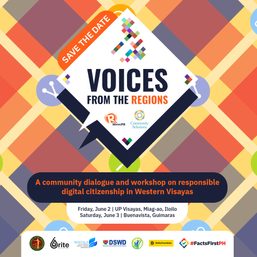
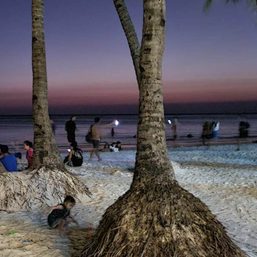






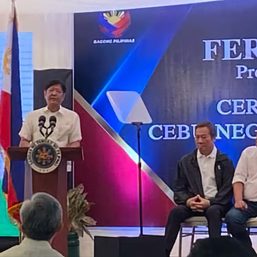
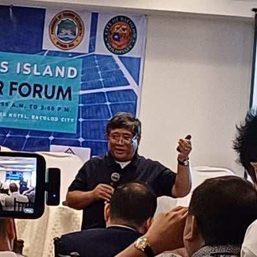
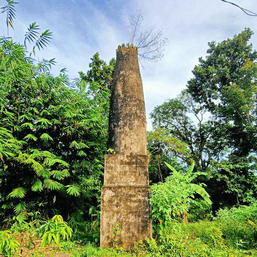

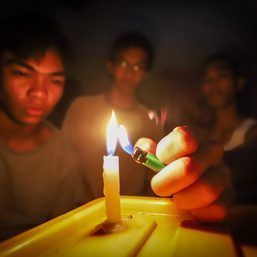




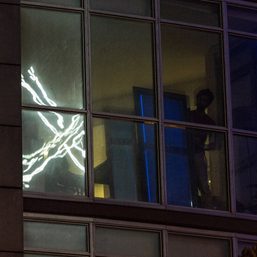





There are no comments yet. Add your comment to start the conversation.